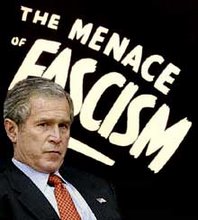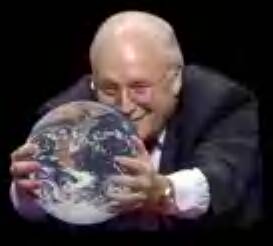The only thing that trickles down during every Republican administration I have witnessed is meanness, nastiness and hate crimes.
Look for this obituary in tomorrow's paper:
Trickle-down economics died yesterday morning at 10AM. The cause of death was a data release from the US Census Bureau, but trickle-down had been ailing from lack of empirical support for decades. Also known as "supply-side economics," trickle-down was the love child of Ronald Reagan, Arthur Laffer, and Jude Wanniski. It is survived by Larry Kudlow and Co., and the editorial page of the Wall St. Journal.
That's what you should see, but you probably won't. Let me explain.
The Census Bureau released some new data on Tuesday that strongly contradicts supply-side, trickle-down economics, but the truth is that if this brand of hucksterism could be brought down by evidence, it would have died long ago.
First, the new data. Every year the Census Bureau releases info on middle-class incomes and poverty for the prior year. So today's release refers to last year's data. Median household income, inflation-adjusted, was up slightly in 2007, but poverty rose too.
But the annual data are not of great interest here. Since 2007 was the last year of an economic expansion that began in 2001, that makes it an economic peak: the last year of a cycle. Which means we can now, for the first time, compare the results from this peak to the peak of the prior cycle: 2000.
Economists like such comparisons because they evaluate a given outcome across similar years in the cycle. If you were to compare, say, trough to peak, you'd expect things to improve. But peak-to-peak is considered the legit way to compare like-to-like.
So here are some key peak-to-peak comparisons:
Real (inflation-adjusted) median household income was essentially unchanged between 2000 and 2007 (it was $300 lower last year than in 2000, but the difference is not statistically significant).
This is the first cycle on record where the real median household income failed to surpass its prior peak.
For working-age households, real median income is $2,000 below its 2000 level.
Poverty rates were 1.2% higher in 2007 than in 2000, up from 11.3% to 12.5%, an addition of 5.7 million to the poverty rolls. This is the worst cycle for poverty on record. The second worse was 1979-89, a decade also dominated by trickle-down economics.
What is trickle-down? It's the set of economic policies based on the notion that if you provide economic incentives to the wealthy by cutting their taxes (or, as the supply-siders put it, "letting us keep our money") while deregulating industry, you'll unleash a tsunami of economic activities that will enrich even the least advantaged among us.
The theory doesn't make sense even on its face. Why would people work harder only if you cut their taxes? After all, their after-tax income goes up, so they might decide they can work less and still be as well off. Or, if you raise their taxes, they might decide to work harder to make up the after-tax losses.
No matter...this stuff is not based on logic. It's largely a rationale for upward redistribution that's been kept alive by the vested interests who benefit from it. Reagan put this stuff on the map, but GW Bush brought it back with a vengeance, and McCain goes even further. He extends the supply-side Bush tax cuts, and lards on about $75 billion more in corporate tax cuts on top of that.
The evidence from the 1980s and the 2000s shows that trickle-down works fine, if by "down" they mean "up." But is there any counter-evidence that shows the impact of a different policy regime on middle-class and low-incomes?
Exhibit A is the 1990s. When he came into office, Clinton eschewed supply-side, cutting taxes on lower-income households and raising them at the top end. Obama takes a similar approach.
Now, take a look at Figures 5 and 6, and especially Table 2 in this document, drawing on today's report from the Census. There you will see evidence of the strong real growth in median incomes and sharp declines in poverty that occurred over the 1990s, contrasted with the opposite trends in the 2000s.
Remember those working-age households that lost a couple of grand in the 2000s? Their income was up 10%, or $5,200 in the 1990s (1989-2000). Had this growth rate prevailed in the 2000s, their median income would have gone up $3,600 instead of falling $2,000.
Note that these results are strongest for minorities. The median household income of African-American households grew 22% in the 1990s and fell 5% in the 2000s. Note also the poverty results from black children (Table 2 from the above link). If evidence were bullets, trickle-down would perish in a pool of blood.
Yet, its obit is premature. It lives on in the Republican platform, the right-wing think tanks, and conservative media (really, in the mainstream media...you may recall that during a Democratic primary debate on ABC, Charles Gibson claimed that due to the magic of supply-side, capital gains tax cuts pay for themselves).
Frankly, I'm not sure how to kill it, and am earnestly interested in any ideas you might have for exposing and discrediting this deeply damaging ruse. In the meantime, the best we can hope for is to throw its practitioners out of the White House and Congress.
(In accordance with Title 17 U.S.C. Section 107, this material is distributed without profit to those who have expressed a prior interest in receiving the included information for research and educational purposes. I.U. has no affiliation whatsoever with the originator of this article nor is I.U endorsed or sponsored by the originator.)
The Nazis, Fascists and Communists were political parties before they became enemies of liberty and mass murderers.




No comments:
Post a Comment